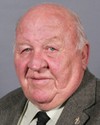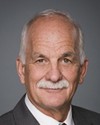Mr. Speaker, I am pleased to rise in the House to support Bill C-16. Although there are some aspects of it that concern me and to which I will refer, on the whole it is a bill that is long overdue.
Probably all of us have been affected either directly or indirectly by impaired driving. I would like to think that no hon. members who serve in the House have done it, but I am not naive enough to think that is true. I would like to hope that none of us have taken that dreaded phone call that tells us a family member or a friend or the child of a friend has had his or her life cut short because of a driver impaired by alcohol or drugs. I am not unrealistic enough to think that is true either.
A Quebec study found that more than 30% of fatal accidents in that province involved drugs or a combination of drugs and alcohol. I have no reason to think that it is any different in my province.
Every day innocent lives are lost. I was reminded of that almost daily when I drove to my office in Mission and saw a roadside memorial to a vibrant, gifted young lady of 18 who was the victim of an impaired driver. Her twin sister, her family and our whole community have changed and will never be quite the same.
As legislators do we not have a moral obligation to do all that we can to address this scourge that is the leading cause of death of our young people? Sadly it is a problem that is not going away.
A study by the Traffic Injury Research Foundation found that in the previous year nearly 20% of Canadian drivers admitted to having driven a vehicle within two hours of using a potentially impairing drug. We are not talking just about illegal drugs, but other drugs as well. Prescription drugs and even over the counter drugs can impair one's ability to drive safely.
The Ontario student drug use survey conducted in 2003 found that about 20% of students reported having driven within one hour of having used marijuana at least once in the previous year. No, the problem is not going away.
Bill C-16 would provide us with one more opportunity to remind Canadians of the lethal danger of impaired driving. The bill is not about making drug impaired driving a criminal offence. It already is. In fact, the Criminal Code provides for severe maximum penalties, even life imprisonment if it causes the death of another person.
The problem with our current law lies in obtaining proof that the individual is under the influence of drugs. Until now, law enforcement officers could only offer descriptions of driving behaviour, or hope to find a witness willing to testify. A driver could only be tested for impairment if he or she volunteered for testing. The honour system is not working. Bill C-16 would allow officers to do an evaluation of an individual and if necessary, demand a sample of bodily fluids such as blood, saliva or urine.
Briefly, this is how it appears the process would work when the measures proposed by Bill C-16 are fully implemented. There would be three methods of evaluating a suspected impaired driver. The first, called standardized field sobriety tests, is done at the roadside and consists of such tasks as standing on one leg, or walking in a straight line, or other multi-tasking challenges, hardly a scientific method.
If the individual fails these simple coordination tests, leading the officer to reasonably assume that an offence has been committed, step two follows at the police station. This step is called drug recognition expert evaluation. It consists of, among other things, a physical examination in which a trained officer looks at the individual's pupils, checks vital signs and searches for injection sites. If after this evaluation of 45 minutes or so the officer still has reason to believe the individual is under the influence of a specific drug, only then will the third most scientific method be used when a sample of a bodily substance will be taken and tested.
I have to admit that this sounds pretty good on paper, but will it work? It behooves us to ask if we can foresee any obstacles or problems with this new testing protocol. Let me ask some questions.
First of all, do we have enough trained officers to do the tests? Actually, we have had some officers trained to do these evaluations for almost 10 years but they have not been busy because the law allows them to test only those who volunteer to be tested. Not many have volunteered. The answer is we do not have enough now but the plan is by 2008 or so to have about 3,500 who could do the roadside test and another 400 to 500 who could do the recognition test at the station. Will that be enough? The Senate special committee on illegal drugs found that 5% to 12% of people have driven under the influence of cannabis, so the chances are that it will not be enough.
Second, can these tests be carried out in a timely manner? I am thinking that the short answer is no. From the roadside to the station and then to the sample testing will take a significant length of time, and the longer it takes, the less likely it is that the presence of drugs can be accurately detected.
Third, will these tests be considered reliable enough as the basis for a charge and subsequent conviction? One would expect the bodily sample tests to be the most reliable, but are they? A 2002 report from the Senate Special Committee on Illegal Drugs looked at the effectiveness of blood, urine, saliva, hair and even perspiration testing for marijuana use. The general conclusion was that they all fell short of giving any clear answers. The only thing that seems to be clear is that their reliability is questionable at best.
For example, blood testing for traces of marijuana would be most effective if done within 10 minutes of smoking. After one hour, concentrations of THC in the blood are down to 5% to 10%, and after two hours it becomes difficult to detect at all.
What about the urine test as another possibility? The unfortunate truth appears to be that the results of urine tests for marijuana are even less promising. Traces of marijuana can remain in urine for weeks and it is very difficult to determine whether marijuana has contributed to the apparent impaired driving.
Perhaps the most prominent method of drug testing is with saliva. The THC remains detectable in saliva for an average of four to six hours and saliva testing is more reliable than blood or urine testing. Again the problem is that there is no technology available to do this test roadside.
Fourth, is there a way to determine thresholds for drug impairment? Is there something equivalent to the .08 for alcohol? Unfortunately it appears that the jury is still out, pardon the pun, on the question of what concentration of a drug in one's system is considered impairing. Until some of these issues are resolved, and we need to make a commitment to do so, we should not be surprised if law enforcement officers continue to be frustrated and if defence lawyers make a lot of money demonstrating why their clients' test results cannot be trusted.
Fifth, before concluding, let me make one final more general point that was actually made by my constituents. During the off week I held a town hall meeting in which I reviewed most of the legislation now before the House. I also had a meeting with one of the school boards where we talked about the government's so-called drug strategy. In both meetings we talked about Bill C-16 and Bill C-17.
I know it must seem completely logical to the government on the one hand to decriminalize what it calls small amounts of marijuana, and on the other hand to attempt to crack down on drug impaired driving, but my constituents could not see the logic. “Is this not sending a mixed message?” they asked. “Is the government against drugs or not?” “Will decriminalizing marijuana not mean that more young people will use it?” “And will some of them not drive?” Those are some very good questions.
My constituents are very concerned about the ever increasing drug use in our communities. Recently a wide cross-section of citizens have come together to establish task forces to fight the growing problem of crystal meth. Marijuana grow ops are also rampant in our communities. Drugs are hurting us and we are struggling to fight back.
I support this bill because I hope it will help to raise awareness and reinforce the message that drugs are not acceptable and impaired driving will not be tolerated. We cannot legislate good behaviour so some people will choose to do drugs and some of them will choose to drive. But we can do our best to encourage one another to make smart choices, and doing drugs and driving while impaired are two dumb choices.













